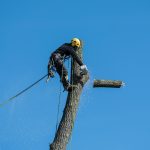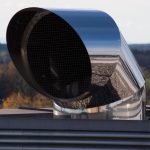Essential Benefits and Considerations for Installing a Green Roof on a UK Semi-Detached Home
Installing a green roof on a semi-detached property in the UK brings significant sustainability home improvement benefits. It enhances energy efficiency by improving insulation, thus reducing heating and cooling costs. This is especially impactful in UK climates, where insulation helps maintain stable indoor temperatures year-round. Additionally, a green roof promotes biodiversity by supporting native plant species even in urban settings.
Beyond environmental gains, a green roof can boost the visual appeal and ultimately increase property value. Semi-detached homes stand to benefit considerably, given their common roof accessibility and visible frontage. However, suitability depends on structural integrity; many UK semi-detached homes require professional assessment to confirm roof load capacity and waterproofing adequacy.
In parallel : Top strategies for choosing the ideal solar water heating system for your uk residence
Challenges include ongoing maintenance needs and potential initial costs. Homeowners should consider local weather exposure and ensure the roof’s slope is appropriate for green roof installation. Selecting drought-tolerant plants can reduce upkeep. By weighing these factors, UK residents can make informed decisions that align with both ecological impact and practical living demands.
UK Planning Regulations and Legal Requirements
Understanding the legal framework for green roofs on UK semi-detached homes
Also to see : Enhance your uk home with stylish fire-resistant materials for ultimate safety
Installing a green roof on a semi-detached home in the UK often triggers specific legal requirements, including planning permission and compliance with building regulations. Generally, for smaller green roof renovations that do not extend the roof footprint or change its height, planning permission may not be required. However, consulting local planning authorities is crucial, as rules vary depending on location, especially in conservation areas or listed properties.
Building regulations focus on structural safety, waterproofing, and fire resistance. Ensuring the existing roof frame can support the extra weight is a mandatory safety consideration. Moreover, because semi-detached homes share walls, neighbour consultation becomes important to avoid disputes over alterations that might affect adjoining properties.
Legal requirements also include adherence to environmental standards, such as drainage and insulation guidelines, which may influence project design. Early engagement with professionals knowledgeable in green roof planning permission UK helps streamline approvals and ensures compliance under UK law, safeguarding the investment while promoting sustainable home improvement.
Materials, Tools, and Cost Estimates for Green Roof Installation
Selecting the right green roof materials is crucial for semi-detached homes in the UK. Typically, extensive green roofs—lighter, with drought-tolerant plants—are preferred for these properties, balancing weight and maintenance. Intensive roofs, heavier and resembling gardens, require more structural support, often unsuitable without significant reinforcement.
Essential installation tools include waterproof membranes, root barriers, drainage layers, and insulation mats to ensure water management and thermal efficiency. The existing roof must be assessed for load-bearing capacity before installation, as added weight might demand structural upgrades. Good waterproofing is non-negotiable to prevent leaks and damage.
Cost estimates for a green roof vary widely but generally range between £50 and £150 per square metre, depending on materials and design complexity. DIY installations reduce labour costs but risk improper layering, so consulting experienced suppliers and contractors is advised. Understanding these factors helps calculate a realistic green roof cost estimate UK homeowners can plan for before committing to this sustainability home improvement project.
Step-by-Step Green Roof Installation Process for Semi-Detached Homes
Installing a green roof on a semi-detached property requires careful adherence to a structured process to ensure durability and performance. First, assess the roof’s structure and drainage system. Structural evaluation confirms load capacity, and effective drainage prevents water pooling that can damage both the roof and plants.
Next is laying protection layers. Start with a high-quality waterproof membrane to safeguard the building fabric. Above this, add a root barrier to stop plant roots from breaching the membrane. Insulation layers come next, enhancing thermal efficiency and supporting the sustainability home improvement goals common in UK projects.
Then, install the substrate—the growing medium tailored for local climate conditions. For UK semi-detached homes, lightweight, drought-resistant substrates are advisable to manage weight and maintenance. Finally, carefully plant appropriate vegetation, focusing on native or hardy species to thrive despite seasonal changes.
This green roof installation guide ensures that each layer functions synergistically, maximizing benefits such as insulation and biodiversity. Consulting with professionals during these stages helps achieve compliance with UK standards and secures lasting performance of your green roof.
Essential Benefits and Considerations for Installing a Green Roof on a UK Semi-Detached Home
Choosing a green roof for a UK semi-detached home delivers notable green roof benefits UK residents value. Primary among these is enhanced energy efficiency, as the additional insulation reduces heating costs in colder months and cooling needs in warmer seasons. This leads to tangible savings on energy bills and supports sustainability home improvement goals.
A green roof also elevates curb appeal, offering a visually striking rooftop alive with native plants. This can positively impact property value, a strong motivator for homeowners assessing long-term investment. However, the benefits depend on site-specific factors like roof slope, load capacity, and microclimate responsiveness, which dictate plant choice and watering regimes.
Challenges for semi-detached homes include shared walls that require neighbour consideration and maintenance demands that differ from conventional roofs. Choosing drought-resistant species minimizes upkeep, aligning with practical lifestyle needs. Overall, understanding these factors allows homeowners to maximize green roof semi-detached advantages while navigating the unique UK housing context.










